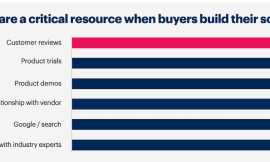Ever wonder where Tux the penguin came from? Jack Wallen offers up a bit of a history lesson.

Illustration: Lisa Hornung/TechRepublic
Way back in 2008, I had my arm inked with the Linux mascot. Of course, when I look back at the photos of that event, my first thought is, “I’m so young!” That was 13 years ago and (fortunately) Father Time has been fairly kind to me.
Getting that tattoo was important to me because it served as a permanent reminder as to how Linux profoundly changed my life (read: My life with Linux: A retrospective). It’s also been a way for other Linux fans to pick me out of a crowd. I cannot tell you how many times I’ve been in public to hear someone called out, “Tux!”
That’s right, the penguin has a name, and it’s Tux.
SEE: Linux turns 30: Celebrating the open source operating system (free PDF) (TechRepublic)
But why would an operating system opt to use a cartoon penguin as a mascot? Let’s take a look at the history of this adorable little guy and uncover why.
Back in 1996, several members of the Linux kernel mailing list were chatting about a suitable logo and mascot for the new operating system. At the time, many of the suggestions were nothing more than parodies of other operating system’s logos. Other suggestions that were bandied about were of more ferocious beasts, such as sharks and eagles.
It wasn’t until Linus Torvalds (the creator of Linux) mentioned that he was fond of penguins. That mention pretty much ended the debate and a penguin would become the mascot of Linux.
Once the decision was made, Linus chimed in again, stating he was an “expert on penguins” (because … who isn’t?) Torvalds made it clear there were only two types of penguins: randy penguins and those that are stuffed with herring. Clearly, Linus didn’t want to go the randy route, so stuffed it would be. His original idea was a slightly overweight penguin that is seated after having gorged itself and burped.
SEE: Linus Torvalds’ greatest hits: A retrospective of the Linux kernel founder’s impact on technology (free PDF) (TechRepublic)
Torvalds wanted to steer clear of the “macho penguin” image. This led the designers to create the cute, cuddly penguin we all know and love.
” data-credit>
The penguin every Linux user knows and loves.
There’s another rumored story about why the penguin was chosen. The rumor goes a little something like this: At some point, Linus was assaulted by a huge, rabid man-eating penguin that was moving at more than 100 miles per hour during the attack. Obviously, this story isn’t true, but it’s still one that is told among the Linux community.
A penguin by any other name …
Now that we’ve established why the penguin was chosen to represent Linux, how did the name come about? Again, it’s all about lore. But like the choice of the penguin, this is well known among those who have been around Linux for decades.
When it came to naming the mascot, Torvalds was unavailable, so the developers launched a contest to name the penguin while Linus wasn’t around. The first name to gain any popularity was “Home,” since the new mascot (designed by Larry Ewing) held a remarkable resemblance to Homer Simpson. It wasn’t until James Hughes suggested Tux (which stands for Torvalds UniX) that the Linux mascot had a name.
And, as they say, the rest is history. You might think a cartoon penguin has no place in business IT, but Linux has been around for decades to prove that sentiment wrong.
Happy 30th birthday Linux. Here’s to 30 more incredible years with you.
For more on Linux’s 30th anniversary, check out these articles by Jack Wallen:
Subscribe to TechRepublic’s How To Make Tech Work on YouTube for all the latest tech advice for business pros from Jack Wallen.
Also see
Source of Article





